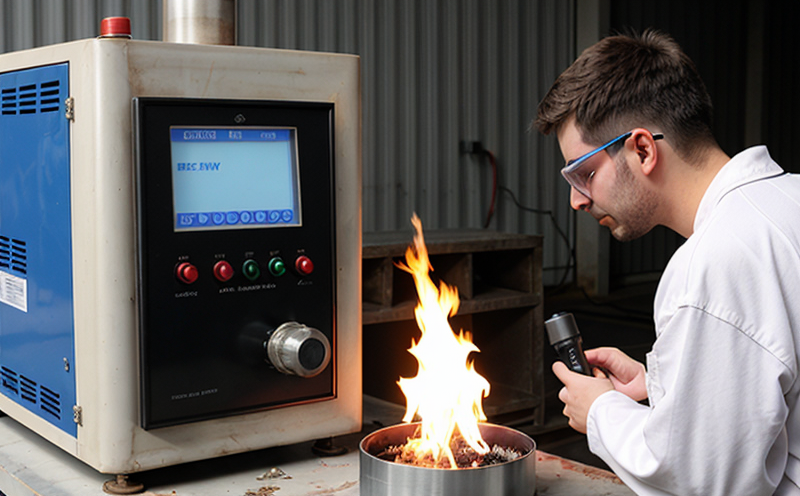DIN EN 15316 Radiator Thermal Performance
The DIN EN 15316 standard outlines comprehensive procedures to determine the thermal performance of radiators used in heating systems. This test is crucial for ensuring that radiators meet specific efficiency and safety standards, thereby enhancing overall energy efficiency and environmental impact.
Testing according to DIN EN 15316 involves several key stages: specimen preparation, installation setup, temperature measurement, heat input calculation, and performance assessment. Specimens are typically pre-conditioned to their nominal operating conditions before testing begins. The apparatus used includes calibrated thermometers, pressure gauges, flow meters, and calorimeters.
The test procedure starts by establishing baseline conditions in the laboratory environment, ensuring that all variables such as air temperature, humidity, and pressure are controlled. Specimens are then installed within a test rig designed to simulate real-world heating system configurations. The heat input is precisely measured using calibrated heaters, while thermal outputs are monitored through thermocouples placed strategically around the radiator.
Performance assessment involves calculating the overall efficiency of the radiator based on its ability to dissipate heat into the surrounding environment under controlled conditions. Acceptance criteria for passing this test include meeting minimum specified efficiencies and ensuring compliance with relevant safety standards.
This rigorous testing process not only guarantees product quality but also supports manufacturers in achieving regulatory compliance. By adhering strictly to DIN EN 15316, companies can enhance their reputation through consistent performance, reliability, and sustainability practices.
Why Choose This Test
Selecting the DIN EN 15316 Radiator Thermal Performance test offers numerous benefits that align with modern quality assurance initiatives. Compliance with this standard ensures that radiators meet stringent energy efficiency requirements, which is increasingly important as global focus shifts towards reducing carbon footprints.
From a regulatory perspective, passing these tests demonstrates adherence to international standards recognized across Europe and beyond. This can open up new markets for manufacturers seeking to expand internationally while maintaining high-quality products.
In terms of operational efficiency, the test results provide valuable insights into how different radiator designs perform under various conditions, enabling continuous improvement in product design and manufacturing processes. For procurement departments, it ensures that they are selecting reliable suppliers whose products consistently meet expected performance levels.
Moreover, successful completion of DIN EN 15316 testing can significantly enhance a company’s competitive edge by differentiating them from competitors who may not adhere to such stringent standards. It also fosters trust among customers looking for eco-friendly and high-performing heating solutions.
Competitive Advantage and Market Impact
The implementation of DIN EN 15316 testing significantly enhances a company’s competitive position in the market by ensuring that their products are not only reliable but also meet the highest industry standards. This is particularly relevant for companies operating in regulated industries where compliance with international standards is mandatory.
By demonstrating commitment to quality through rigorous testing, manufacturers can build strong brand loyalty among consumers who value sustainability and energy efficiency. Such practices encourage customer trust and satisfaction, ultimately leading to increased sales and market share growth.
The results of DIN EN 15316 tests provide valuable data that can be used for marketing purposes, highlighting the superior performance characteristics of products offered by compliant manufacturers. This information becomes a key differentiator in competitive bidding processes or when negotiating contracts with large clients.
Additionally, compliance with this standard may lead to reduced liability risks associated with non-compliant products failing to meet expected performance levels. This added layer of protection can be particularly beneficial for companies facing strict regulatory environments and potential legal challenges.
Use Cases and Application Examples
| Use Case | Description |
|---|---|
| Product Development | DIN EN 15316 testing is essential during the initial stages of product development to ensure that new radiator designs meet all necessary performance and safety requirements. |
| Supplier Evaluation | This test serves as a critical tool for evaluating potential suppliers, ensuring they can consistently deliver products meeting specified thermal performance criteria. |
| Quality Control | Regular testing ensures ongoing product quality and helps identify any variations or issues that need addressing promptly. |
| Regulatory Compliance | Meeting the requirements of DIN EN 15316 is mandatory for manufacturers operating in regions where this standard is enforced. |
| Environmental Impact Assessment | The results from these tests contribute to a broader understanding of how different radiator designs impact energy consumption and greenhouse gas emissions. |
| Customer Satisfaction Enhancement | Offering products that consistently meet high thermal performance standards enhances customer satisfaction and loyalty. |
The DIN EN 15316 Radiator Thermal Performance test finds application in various sectors, including residential heating systems, commercial buildings, industrial facilities, and public infrastructure projects. Its importance lies in its ability to ensure that radiators perform efficiently while adhering to strict safety regulations.





